Enter the oh-so-calming world of lotus coloring pages. These fun illustrations offer a serene haven, a canvas for both seasoned artists and those seeking respite from the challenges of daily life. In this article, we will explore and learn all about lotus flowers, delving into their cultural significance, therapeutic advantages, and the sheer delight they bring to anyone who immerses themselves in the calming strokes of colored pencils or markers. Whether you’re an experienced artist or simply looking for a soothing pastime, prepare to begin on a journey of creativity and inner harmony through the captivating allure of coloring lotus flowers on paper.
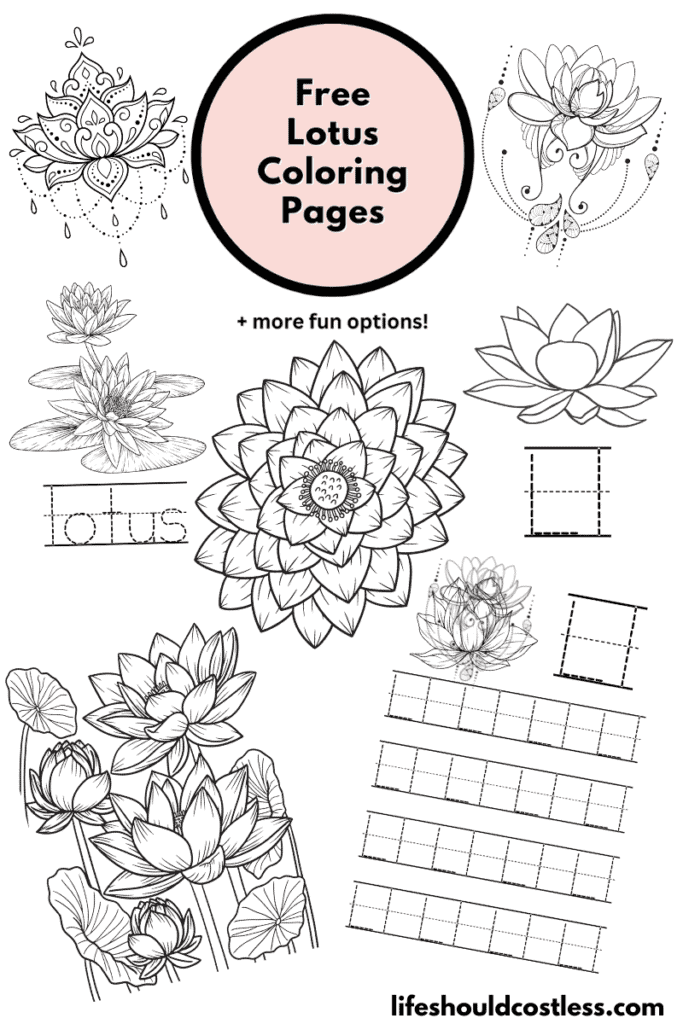
You’re welcome to choose the design that resonates with you the most, then access the free PDF template, print it out, and immerse yourself in coloring to your heart’s content.
Additionally, these designs can serve as embroidery patterns or serve as a wellspring of inspiration for creating delicate line tattoos.
Lotus facts
For those who are new to my coloring pages, it’s worth noting that I enjoy providing the opportunity to explore the subject matter, allowing you to seamlessly transform your coloring experience into an educational lesson.
Let’s dive right in!
Lotus flowers are fascinating and hold cultural, symbolic, and scientific significance.
Here are several fun and interesting facts about them:
- Sacred Symbolism: Lotus flowers have deep spiritual and cultural symbolism in various societies, particularly in Asian cultures like Hinduism, Buddhism, and Egyptian mythology. They often represent purity, enlightenment, rebirth, and spiritual awakening.
- Growth in Mud: Lotus plants grow in muddy waters but rise above the surface to bloom, symbolizing the idea that beauty can emerge from challenging or adverse conditions.
- Variety of Colors: Lotus flowers come in various colors, including pink, white, red, and blue. Each color holds different symbolic meanings; for example, white lotus symbolizes purity and spiritual perfection, while red lotus represents compassion and love.
- Self-Cleaning: Lotus leaves have a remarkable self-cleaning ability, often referred to as the “lotus effect.” They are covered in tiny, water-repellent bumps, allowing water droplets to roll off, taking dirt and debris with them. This property has inspired self-cleaning materials and coatings.
- Longevity: Lotus plants are known for their long life span. They can live for over a thousand years in the right conditions, and some lotus seeds have remained viable for centuries.
- Edible Parts: Many parts of the lotus plant are edible. Lotus seeds are commonly used in Asian cuisine, often found in desserts and soups. The young leaves and stems are also consumed as vegetables.
- Medicinal Uses: Traditional Chinese medicine and Ayurveda utilize various parts of the lotus plant for their medicinal properties. Lotus is believed to have benefits for the digestive system, skin, and overall health.
- Floating Leaves: Lotus leaves are unique in their ability to stay dry while floating on water. This adaptation is due to the hydrophobic (water-repellent) nature of the leaf surface.
- Floral Arrangements: Lotus flowers are popular in floral arrangements, adding a touch of elegance and cultural significance to weddings, religious ceremonies, and other special occasions.
- Nelumbo Genus: The scientific name for the lotus is Nelumbo. There are two main species within this genus: Nelumbo nucifera, the sacred lotus, and Nelumbo lutea, the American lotus. Both species are known for their striking appearance and cultural importance.
- Culinary Delights: Beyond its medicinal uses, lotus is a versatile ingredient in Asian cuisine. It’s used in savory dishes, desserts, teas, and as a garnish. The lotus root, in particular, is prized for its crisp texture and earthy flavor.
- Artistic Inspiration: Lotus flowers have been a recurring motif in art, literature, and architecture for centuries. They often feature prominently in Asian paintings, sculptures, and religious icons.
- Astronomical Connection: The ancient Egyptians associated the lotus flower with the sun, as it closes its petals at night and reopens in the morning. This behavior parallels the sun’s rising and setting.
- Habitat for Wildlife: Lotus ponds and wetlands created by these plants provide important habitats for a variety of wildlife, including frogs, fish, and waterfowl.
These intriguing facts showcase the beauty, resilience, and cultural significance of lotus flowers, making them a symbol of inspiration and fascination worldwide.
We learned a lot about the lotus, but there’s definitely more to know.
If you would like to continue on your lotus-knowledge seeking quest, here are some other reputable resources to learn about them:
- https://en.wikipedia.org/wiki/Nelumbo_nucifera
- https://www.britannica.com/plant/sacred-lotus
- https://a-z-animals.com/blog/lotus-flower-discover-the-powerful-meaning-symbolism-and-proper-occasions/
- https://www.healthline.com/health/8-uses-for-lotus
- To see all of my free printables, go here.
- To see an alphabetized index of my coloring pages, go here.
- To see all of my botanicals coloring pages, go here.
- To see all of my floral coloring pages, go here.
Coloring tips
Coloring lotus flowers can be a delightful and relaxing experience.
Here are some of my best tips and tricks to help you create a beautiful and vibrant lotus flower in your coloring:
- Choose the Right Colors: Research the colors commonly associated with lotus flowers. While they come in various colors, such as pink, white, red, and blue, pink and white are the most common. However, don’t be afraid to get creative with your color choices if you want to explore more whimsical interpretations.
- Layering and Blending: Use colored pencils or markers to layer colors gradually. Start with light strokes and build up the intensity. Blending colors can give depth and dimension to your lotus petals.
- Reference Images: Look at reference images of lotus flowers to understand their natural color variations and the play of light and shadow on the petals. This can help you make your coloring more realistic.
- Texture and Details: Pay attention to the texture and details of lotus petals. They often have subtle ridges and lines. Use fine-tipped pens or pencils for precise detailing.
- Contrasting Background: Consider using a contrasting background color to make your lotus flower stand out. A dark background can make a light-colored lotus pop, while a light background can accentuate a darker-colored lotus.
- Shading: Practice shading techniques to add depth to your lotus petals. Shadows and highlights can make your coloring more three-dimensional. Study how light falls on the petals in your reference images.
- Start with the Center: Begin your coloring with the center of the lotus flower. The center often has a different color or texture than the petals, so it’s a good place to start and build outward.
- Coloring Tools: Experiment with different coloring tools, such as watercolor pencils, pastels, or even digital coloring apps. Each medium can give your lotus flower a unique look and feel.
- Color Harmony: Pay attention to color harmony. Select colors that complement each other well. You can use a color wheel or color theory principles to choose harmonious color combinations.
- Practice Patience: Coloring lotus flowers, especially intricate ones, can be time-consuming. Take your time and enjoy the process. Patience can lead to a more satisfying result.
- Blend with Solvents: If you’re using colored pencils, consider using blending solvents like odorless mineral spirits to smooth out the colors and achieve a more polished look (only if age-appropriate of course).
- Protect Your Work: If you’re working with traditional media like markers or watercolors, use a sheet of scrap paper under your hand to prevent smudging. Consider spraying your finished artwork with a fixative to protect it from fading.
- Experiment with Background Effects: Try different background effects like gradients, watercolor washes, or even a simple solid color. The background can enhance the overall appearance of your lotus flower.
- Personalize: Don’t be afraid to add your personal touch. You can experiment with patterns, incorporate other elements like leaves or water, or even create an abstract lotus design.
- Relax and Enjoy: Coloring lotus flowers is not just about the final result; it’s also a therapeutic and enjoyable activity. Put on some calming music or find a quiet space to unwind while you color.
Remember that there are no strict rules in coloring, so feel free to express your creativity and have fun as you bring your lotus artwork to life.
Options for printing
Letter L is for lotus writing practice worksheets
*The coloring sheets for “Letter L is for lotus” have been tailor-made for classroom use, and they stand out as the sole printables on this page that can be utilized in a public setting without necessitating written authorization.
Should anyone inquire about their source, I kindly request that you share the link to this post.
Your cooperation is greatly appreciated. Thank you!
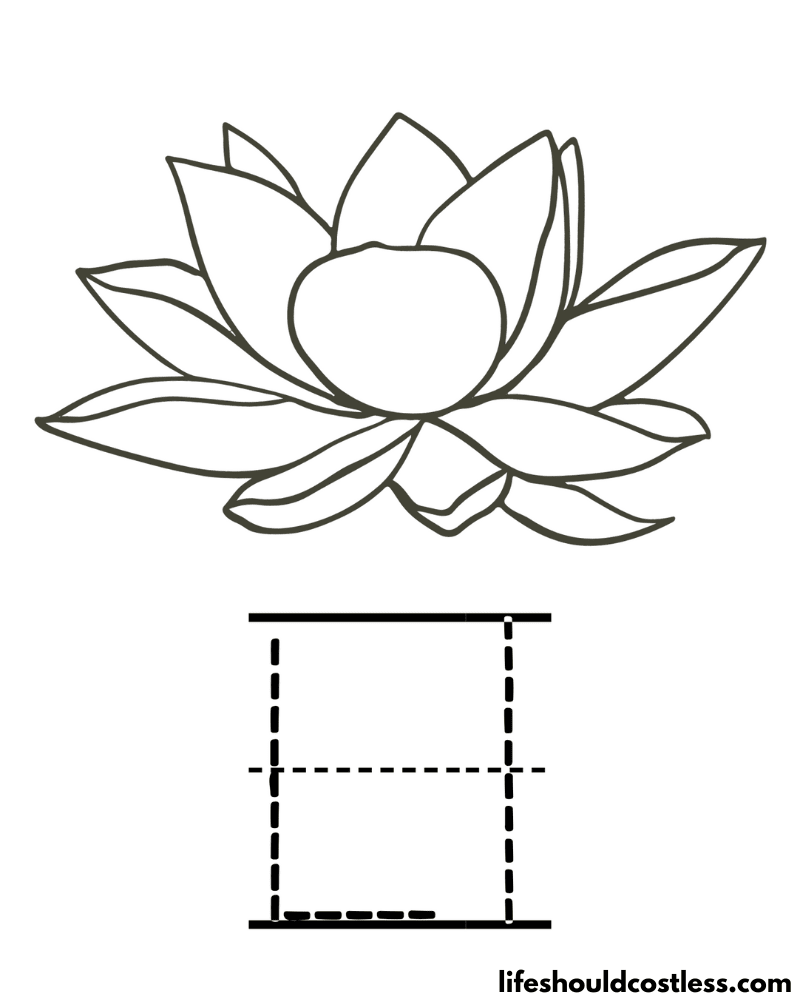
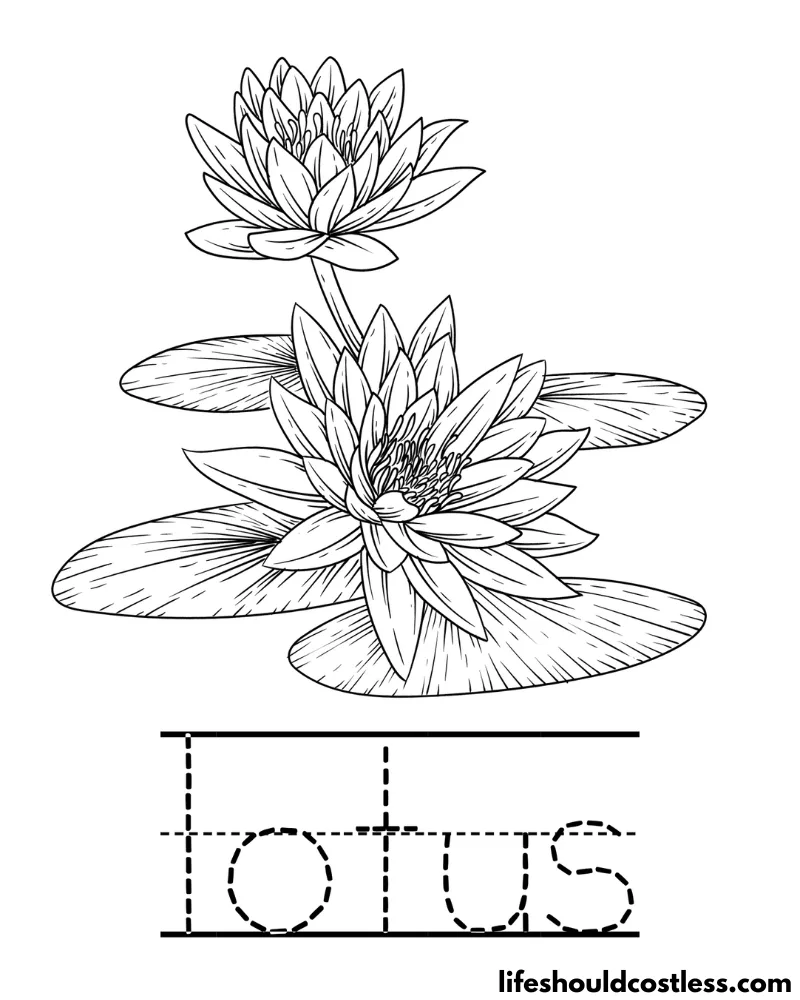
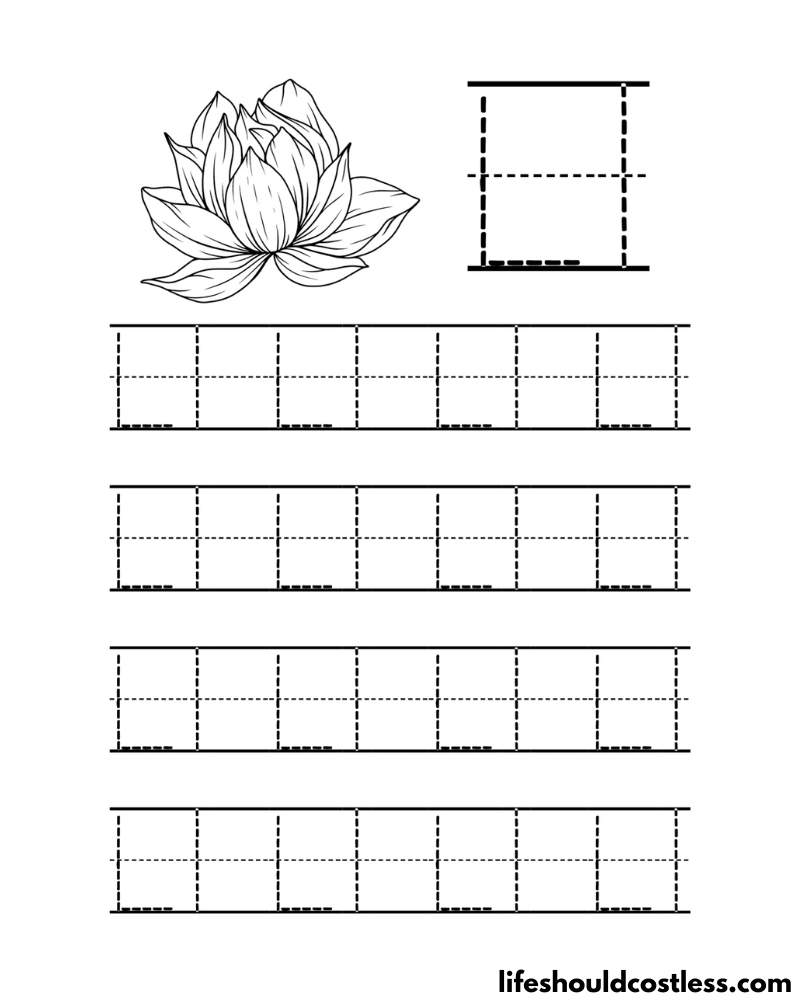
Various lotus designs
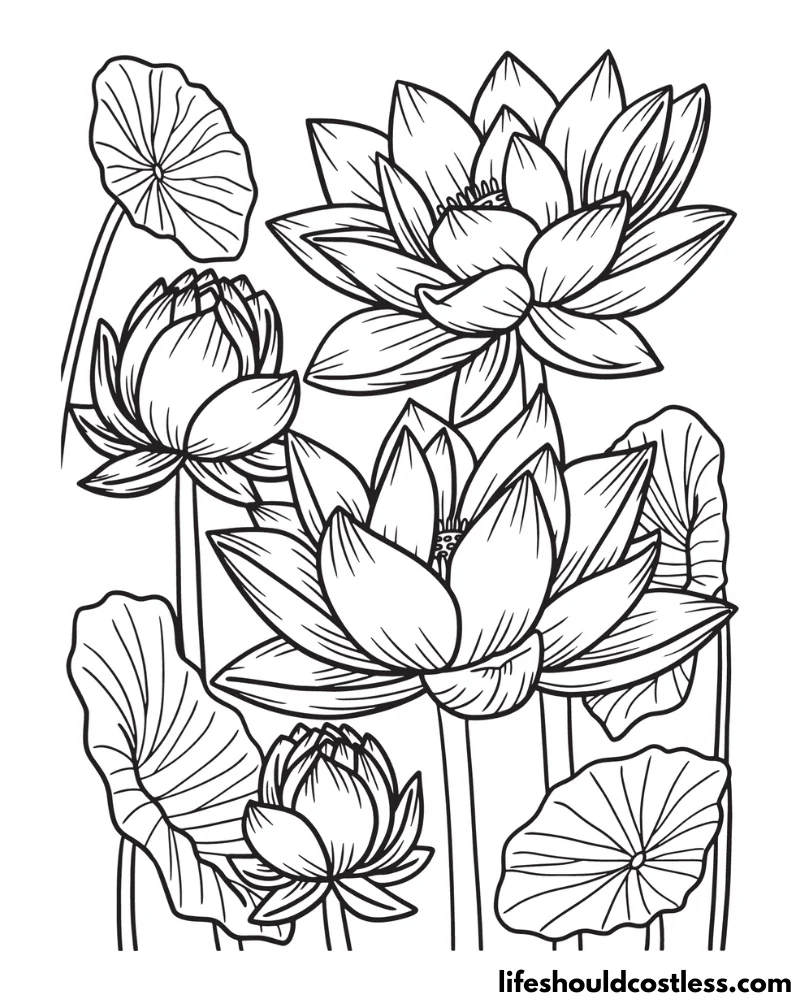
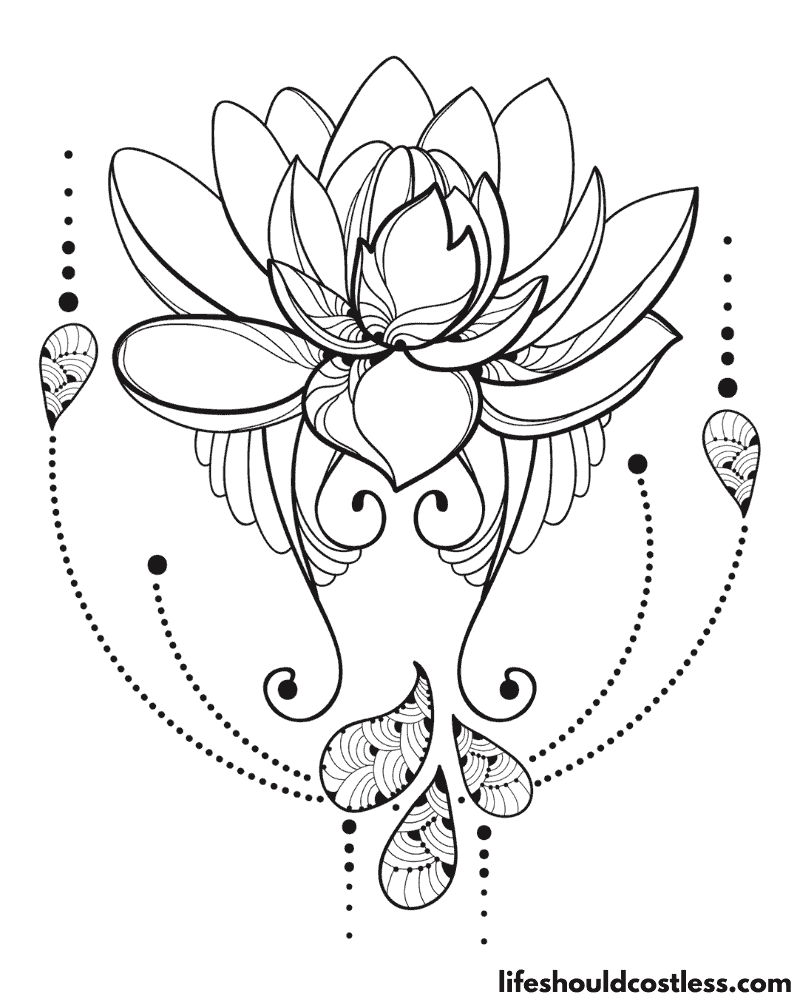
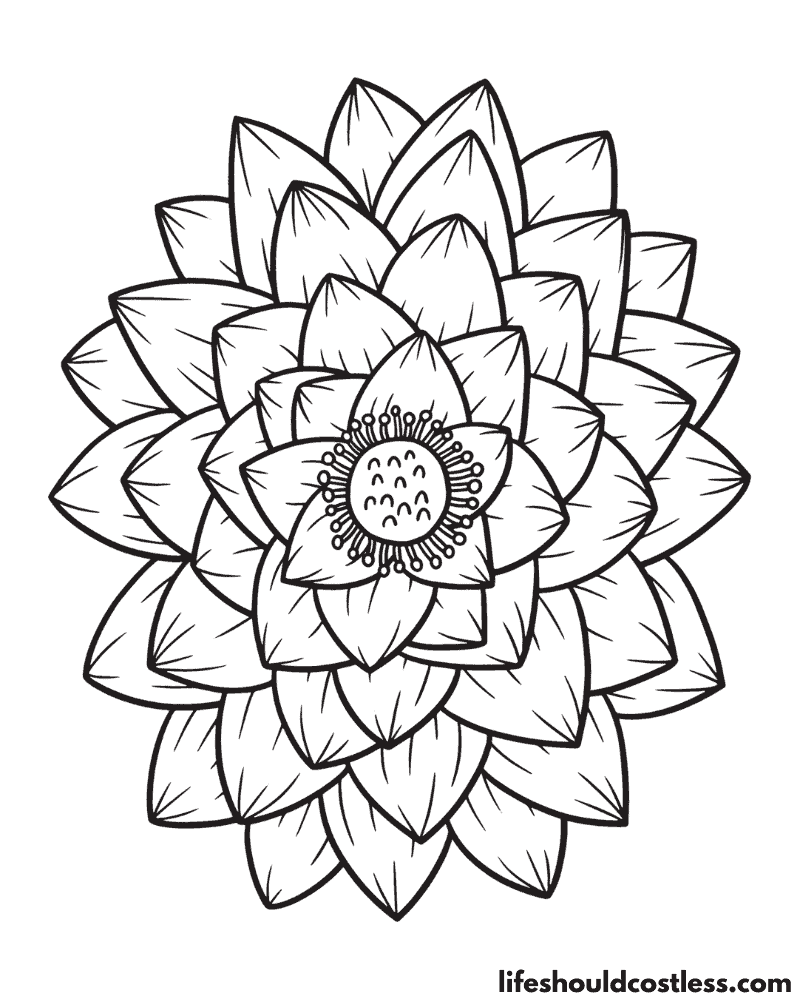
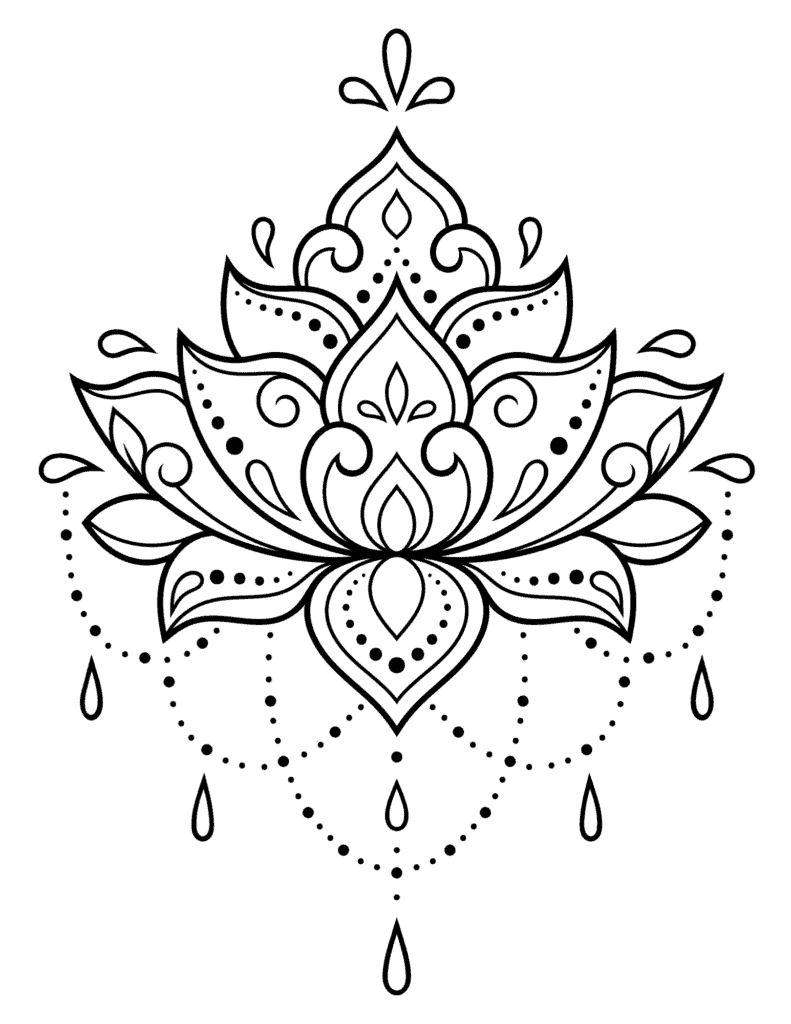
FAQ’s
Lotus flowers come in various colors, with the most common colors being pink and white.
However, lotus flowers can also be found in shades of red, blue, purple, and yellow, depending on the specific species and variety.
The color of a lotus flower can also change as it ages, with some flowers starting as one color and gradually transitioning to another.
Pink and white lotus flowers are particularly iconic and hold significant cultural and symbolic meanings in many cultures.
*I will add more lotus colour / color questions and answers as the questions get sent to me.
Conclusion
In the serene world of lotus coloring pages, we’ve ventured into a sphere of creativity and tranquility.
As we conclude our exploration, we’ve uncovered not just the artistic joy these intricate designs bring, but also their rich cultural significance and therapeutic benefits.
Coloring the lotus can serve as a canvas for self-expression, a gateway to mindfulness, and a bridge to understanding the symbolism of this enchanting flower.
Whether you’re using them as a tool for education, relaxation, or simply a means of artistic expression, these coloring pages invite you to immerse yourself in the captivating beauty of lotus flowers, reminding us that even in the act of coloring, we can find moments of peace, inspiration, and inner harmony.
So, pick up those colored pencils, embrace the meditative strokes, and let the lotus guide you on a journey of creativity and serenity.
Thanks so much for stopping by my blog and supporting my endeavors to make people’s lives a little easier/better/more affordable.
If you liked this post, or found it helpful in any way, please make sure to share it with your family, friends, and co-workers via social media.
Or you could even send them the direct link via email. Whichever way you choose to spread the love, I super appreciate it! ~Sarah
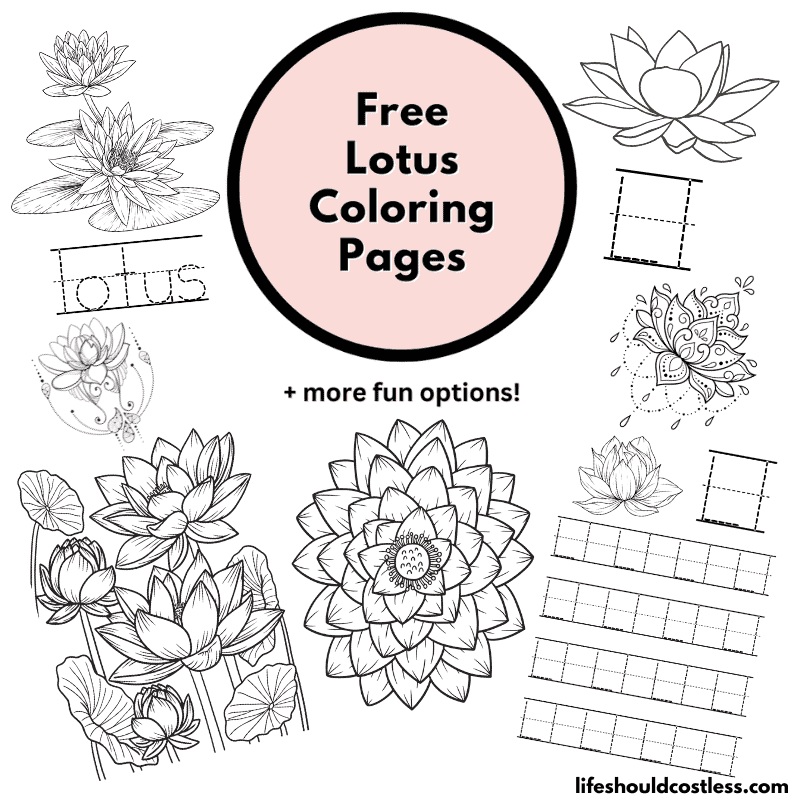
How To Follow & Support This Site
- If you would like to subscribe to my email list, go here.
- Make sure to follow along via social media, by going here.
- If you would like to learn how to really show your support to this site (at no cost to you), go here.
- If you would like to make a direct donation to the site, go here.
Check out my other free printables
- To see all of my free printables, go here.
- To see an alphabetized index of my coloring pages, go here.
- To see all of my botanicals coloring pages, go here.
- To see all of my floral coloring pages, go here.
Otherwise, here are direct links to several of my other related posts that you’re also going to love:
Botanicals / Floral & Misc
Botanicals / Fruits
Other good resources for a printable lotus
- https://freecoloringdaily.com/free-lotus-flower-coloring-page/
- https://www.dreamstime.com/illustration/lotus-coloring-page.html
- https://letmecolor.wordpress.com/2008/01/28/lotus-flower-coloring-page/
*This post was originally shared to this blog on 10/25/2023, and has since been updated to improve user experience, add video instruction, as well as to make it as shareable as possible across the social medias.
**Please note that I do try my hardest to provide factual, but easy to understand, information about each topic. If you notice a discrepancy in my coloring pages, facts, or see something that you deem “misinformation/incorrect” please make sure to notify me about it. I would prefer that you send me an email with a link to a more reputable resource on that subject, so that I can correct it as soon as possible. Thanks so much for helping this site become the best that it can be!
***Resources from djinkers were used in the production of this article.
***Resources from djinkers were used in the production of this article.
